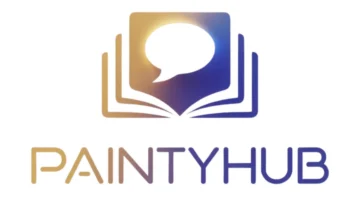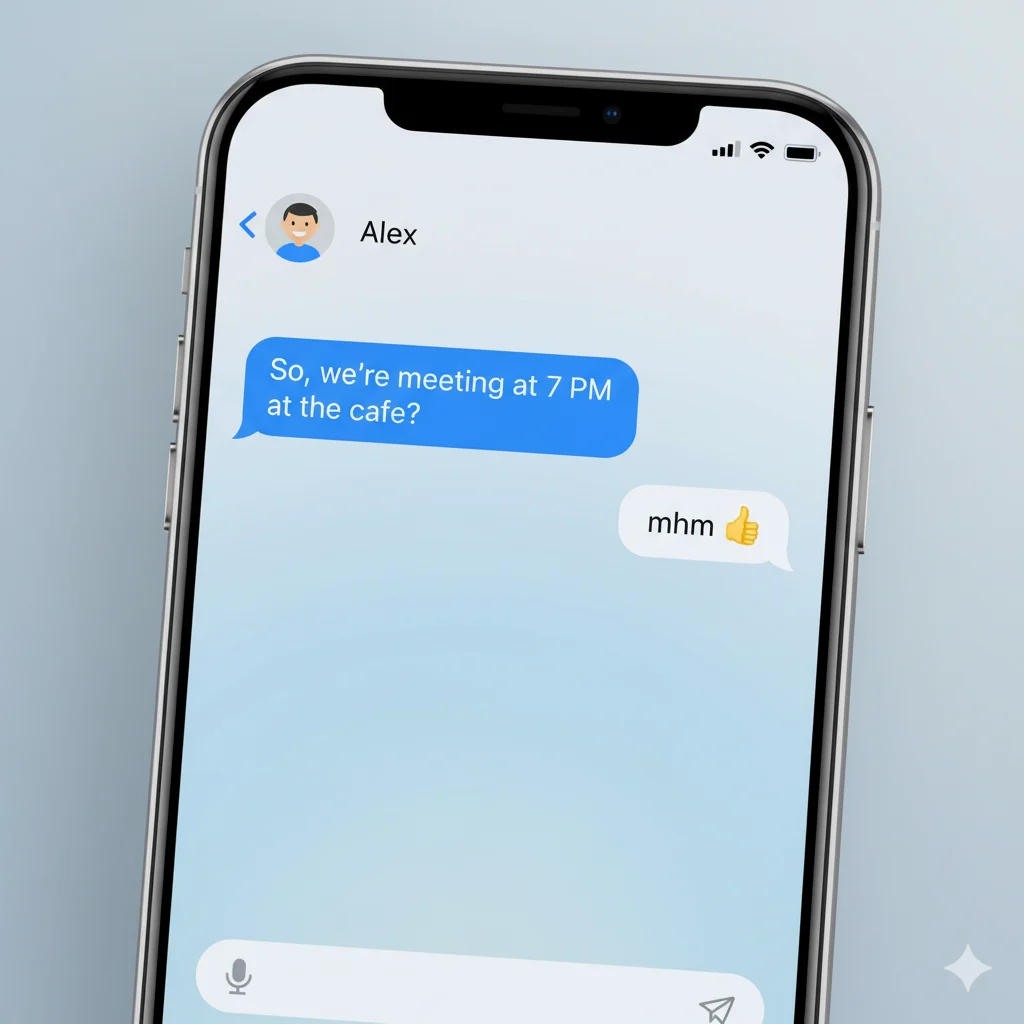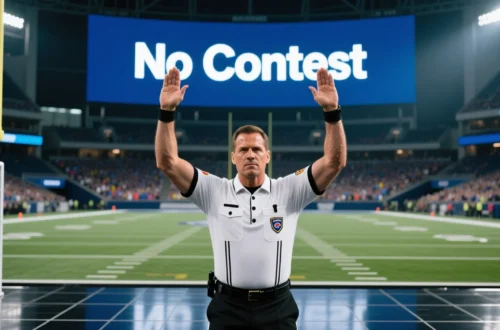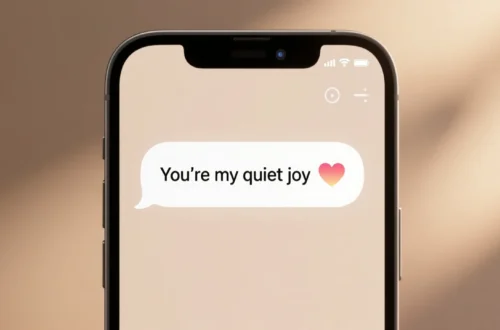Hey, social media texter and chat-lover 👋!
Ever seen someone reply with “mhm” in a message and felt unsure what they meant? Maybe you thought “Did they agree, are they bored, or something else?”
If you’re someone who texts, uses WhatsApp, Snapchat, Instagram, plays online games, or chats casually with friends — this article is for you. We’ll break down exactly what “mhm” means in a text, why it appears so often, how you can use it (or respond to it) like a pro.
Understanding this little abbreviation can help you avoid mis-reading messages, sound more fluent in digital chat, and stay on the same wavelength with others. Let’s get started and decode this two-letter wonder.
Definition & Meaning
So what does MHM mean in text?
👉 “mhm” is a written form of the sound “mm-hmm,” used to express agreement, acknowledgement, or a casual “yes.”
It can also serve as a listening cue (“I hear you”)or, sometimes, as a neutral or passive reply, depending on the tone.
Examples
Friend A: “We’re heading out at 7, cool?”
Friend B: “mhm 👍” → Here “mhm” = Yes, got it.
Friend A: “I finished the entire series today.”
Friend B: “mhm…” → Here “mhm” = acknowledgement with perhaps little comment.
Online chat:
“Did you see that meme I sent?”
“mhm”
Here it may mean “Yes I saw it,” or maybe “I’m listening” or simply “okay.”
Key point:
- In most cases, mhm = yes/okay/I hear you.
- But the meaning shifts based on context, punctuation, emojis, and conversation flow.
- It’s casual, quick, and often used when someone wants to respond without writing a full sentence.
Background & History
The expression “mhm” comes from the spoken sound “mm-hmm,” which people have used for decades as a verbal nod of agreement or acknowledgement.
With the rise of texting, instant messaging and social media, people started typing shorter forms to respond quickly. Hence “mhm” became a popular shorthand.
Since the early 2000s, chat platforms like AIM, MSN, and later WhatsApp, Instagram DMs and Snapchat contributed to the spread of “mhm.” On platforms where rapid replies are normal, “mhm” is a fast way to stay in the conversation while typing less.
Today, “mhm” is common among Gen Z, Millennials, online communities, and social media users for quick acknowledgement, agreement, or even a subtle reaction.
Usage in Various Contexts
Let’s see how “mhm” works in different situations:
Texting & Messaging
Example:
Ali: “You coming over later?”
Sara: “mhm” → simple yes.
Example:
Friend A: “I told you I’d finish by 10.”
Friend B: “mhm, I saw you working.” → acknowledgement/confirmation.
Social Media Comments
“Just got the best coffee in town.”
“mhm ☕️” → friendly agreement or appreciation.
Dating Apps & Flirt Chat
Example:
You: “You look amazing in that pic.”
Her: “mhm 😏” → could be agreement + playful tone.
Example:
You: “So you want to hang out this week?”
Her: “mhm…” → maybe yes but hesitant.
Gaming/Discord Chat
Leader: “Group ready for raid?”
Member: “mhm, load in.” → quick yes, let’s go.
Professional or Formal Setting
In workplace chats or formal emails, “mhm” is rarely ideal because it can appear too casual or unclear. Instead of “mhm,” use “Yes,” “Understood,” or “Confirmed.”
Common Misconceptions & Clarifications
❌ Misconception: “mhm” always means enthusiastic yes
Not always. It can be flat, neutral, passive, or even distant. Tone and context matter.
❌ Misconception: “mhm” is rude or dismissive
It can feel dismissive if used in a certain way (“mhm.” with a period, no emoji). But often it is simply a minimal acknowledgement.
✅ Clarification: Use with caution in serious chats
When conversation involves strong emotion, formal topic, or clarity is needed, a simple “mhm” may not suffice — consider writing out your meaning more fully.
Similar Terms & Alternatives
Here are other quick reply terms you might see:
| Term | Meaning | Tone |
|---|---|---|
| Yep / Yup | Yes | Casual |
| Okay / OK | Agree or accept | Neutral |
| Mm-hmm | Verbal agreement | Informal |
| k | Fine / okay | Very casual or sometimes dismissive |
| Understood | I got the info | Formal |
mhm fits into the “quick affirmation” category but with more nuance than “yes” or “okay”.
How to Respond to “mhm”
When someone says “mhm,” how you respond depends on the context:
Casual Response
Friend: “mhm” (to your plan)
You: “Great! See you then 🙂”
Funny Response
You: “mhm… you sure you don’t want dessert first?”
Friend: “mhm 😋”
Professional Response
If someone replies “mhm” in a work chat, you might clarify:
“Thanks for the confirmation — I’ll send the draft tomorrow.”
Privacy-Conscious / Clarification Response
If you’re unsure what their “mhm” meant:
“Just to check — when you say ‘mhm’ did you mean yes, or you’ll confirm later?”
Regional or Cultural Differences
“Mhm” is widely used in English-speaking countries (US, UK, Canada) especially in texting and social media. In other languages/cultures, similar sounds or short replies exist but may carry different nuance.
It’s less common in formal communications globally. In many Asian or European texts, people use full words (“yes,” “okay”) more often than “mhm” in formal contexts.
Comparison with Similar Terms
| Expression | Meaning | Best Use Case | Tone |
|---|---|---|---|
| mhm | Yes / acknowledgement | Casual chat, social media | Relaxed |
| k | Okay | Very informal, texting | Very casual |
| OK | Accept or agree | Casual or semi-formal | Neutral |
| Understood | I understand / will act | Formal or work chats | Professional |
Usage in Online Communities & Dating Apps
On platforms like Tinder, Bumble, or gaming servers:
“Are you free tonight?”
“mhm.” → yes, but short.
In comments or meme posts:
“When your friend says ‘I can’t come’ again…”
“mhm, same.”
In dating apps, “mhm” may signal agreement but sometimes minimal engagement — you may want to follow with something more meaningful.
Hidden or Offensive Meanings
“Mhm” is not inherently offensive. But:
- A flat “mhm.” (period) with no follow-up may feel dismissive.
- A drawn-out “mhhhm…” may signal sarcasm or disbelief.
- Because tone is invisible in text, it’s easy to misinterpret.
So always read the context and, when in doubt, ask for clarification.
Suitability for Professional Communication
In emails, formal chats, work Slack messages — “mhm” is too informal. Use:
- “Yes, I’ll proceed.”
- “Understood, thanks.”
- “I agree with your plan.”
Using “mhm” in a formal setting might come off as lazy or vague.
FAQs
1. What does “mhm” mean in text?
It’s a shorthand for “mm-hmm,” meaning acknowledgement, agreement or “yes.”
2. Is “mhm” the same as “yes”?
Often yes, but tone may vary — sometimes it’s more reserved or passive than a full “yes.”
3. Is “mhm” rude?
Not necessarily; though used carelessly it can feel dismissive. Context matters.
4. Can I use “mhm” in a professional message?
Better to avoid. Use “Understood,” “I agree,” or full sentence reply instead.
5. What’s the difference between “mhm” and “k”?
Both are very short replies. “k” often means simple acknowledgement (“okay”), sometimes negative; “mhm” implies more agreement or listening.
Conclusion
To wrap up — mhm is a quick, casual way to say yes, I hear you, or I’m listening. But because it’s short and understated, it can sometimes feel vague or even distant.
Use it when you’re texting casually, chatting with friends, or replying quickly. Just remember: tone and context matter. In serious or professional conversations, opt for clearer words.
Next time you see “mhm,” you’ll know exactly what it likely means — and how you can respond appropriately.






